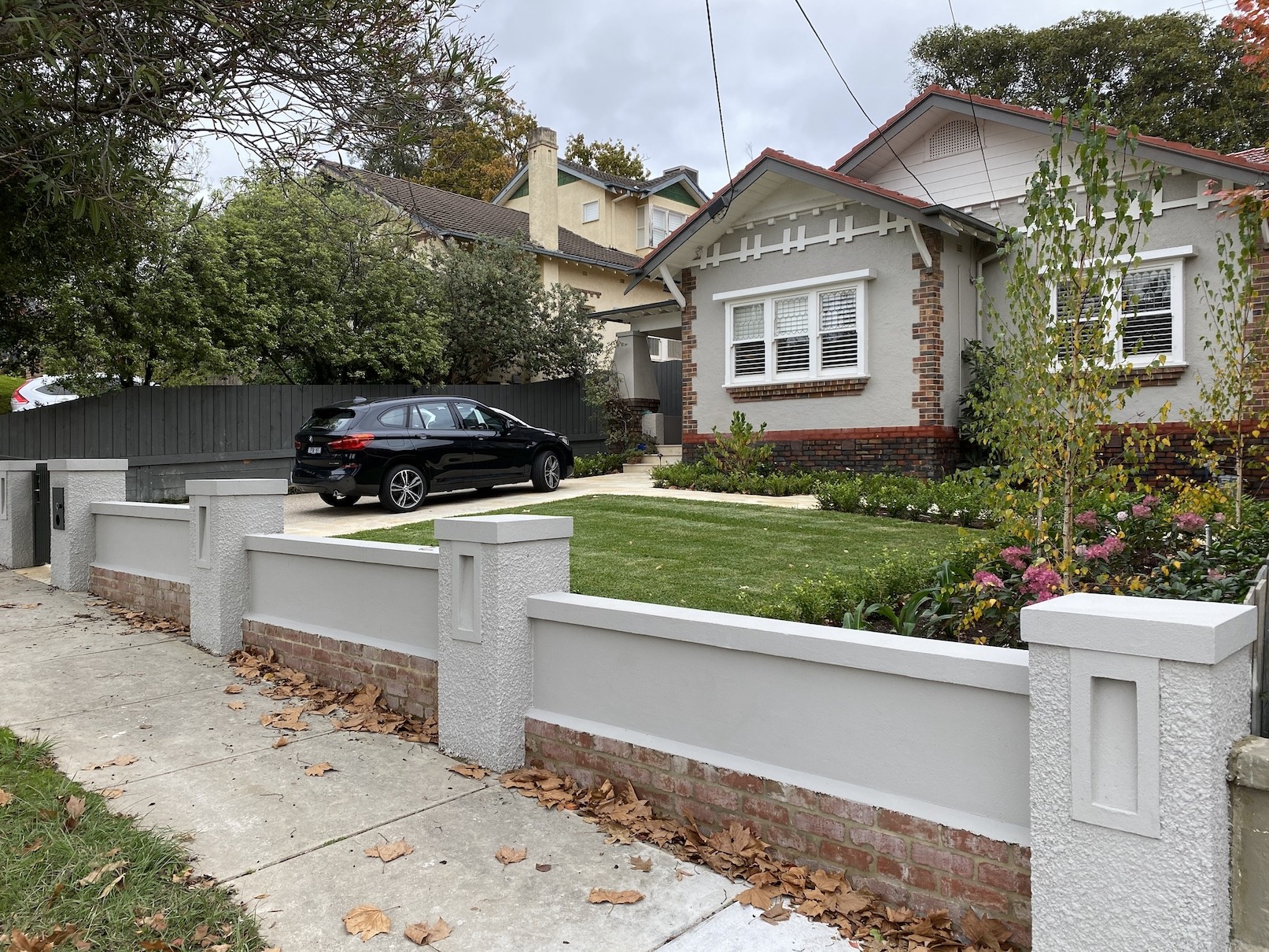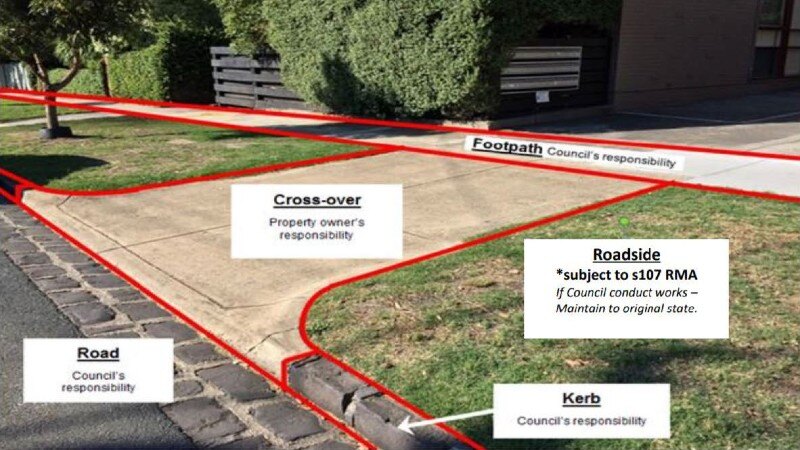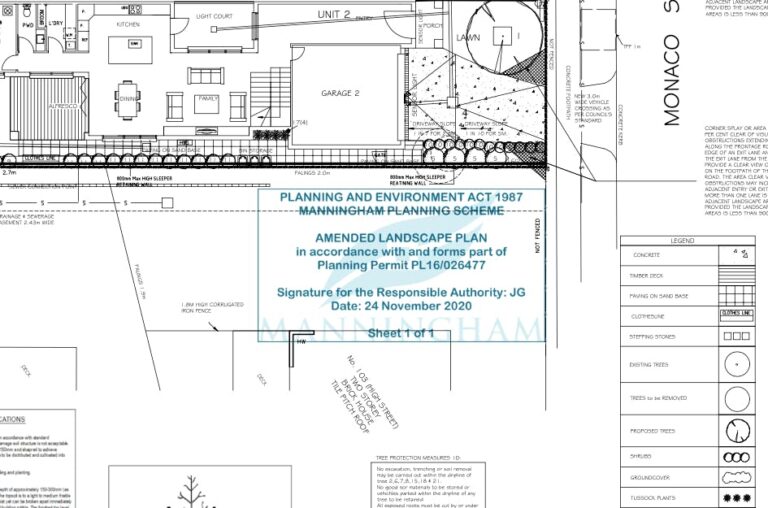How might a heritage overlay affect me landscaping my home?
May 22nd, 2024
7 min read
By Andrew Whyte

Do you have a period-style home such as Victorian, Edwardian or mid-century Modernist? Is your home subject to a heritage overlay? Are you wondering how this overlay may affect your plans to landscape your garden?
As Landscape Architects and Landscapers, we’ve been involved in literally hundreds of landscaping projects for homes covered by heritage overlays. We understand many of the issues involved and how to ensure you can still have a wonderful new garden while keeping within heritage regulations.
If you’d like to save yourself angst, time and money worrying about how heritage regulations might affect your landscaping project please feel free to read through this article. We think you’ll find it very helpful.
What is a heritage overlay?
Heritage overlays are created by local municipalities to help preserve and protect the architectural heritage of their local area.
These regulatory controls help to preserve buildings in their original style and prevent them from being demolished or modified to the point where they no longer look recognisable and their heritage is lost.
The controls are largely enforced and controlled by local councils through their planning scheme. A good landscape architect or landscape designer understand how these overlays work and can help you negotiate around any issues with the council.
One important aspect to note is that often heritage controls focus more on the external appearance of buildings than their internal appearance unless, of course, they are buildings of historical significance. However, it is best to always check your specific heritage overlay to confirm this.
This is why it’s still possible for older-style buildings to be substantially renovated inside to make the building more functional for modern purposes.
How do heritage overlays affect residential properties?
Domestic buildings are more commonly affected by heritage overlays than commercial buildings’. The overlay places restrictions on what can and can't be done to the building.
The purpose of these overlays is to preserve not only the heritage of the individual building itself but also to preserve the “streetscape” as well. If you can picture a street with rows of Victorian Terrace Houses on both sides, you can imagine how all those buildings together give a certain character to the street. Changing all or some of the facades of these buildings to say modern glass and steel would dramatically alter the streetscape and cause it to lose its Victorian-era character and charm.
This is why so many of the heritage regulations and guidelines contain the expression 'visible from the street' because this is what the council is often most concerned about when enforcing heritage laws. They don’t want you to substantially change the look of the building.
How do I find out if my property has a heritage overlay?
Each council area tends to have their own individual processes for delineating what areas or properties are under a heritage overlay.
Sometimes there can be individual properties that have their own heritage overlay but it is more common to have a larger area than just one property subject to them. This is why they are called 'overlays' because they might cover an entire street, several streets, a district or even an entire suburb. Rather than providing an individual heritage listing for each individual property, the overlays tend to cover all the properties in the defined area.
If you go to your local council website, you might find there is a link to find out if your home is affected by a heritage overlay.
You can find what zones, overlay and schedules to overlay apply to your property here: https://www.land.vic.gov.au/property-and-parcel-search
If you are planning any significant change to your property, including any landscaping works, you might want to contact your council first. (If you are engaging a landscape designer or architect they should do this for you.)
How does a heritage overlay control what I can do to my property?
As previously explained, most heritage overlays concern themselves with the look and character not just of the individual property itself but also how that property appears as part of the overall look and feel of a streetscape.
If your street is full of Edwardian-looking homes, it has a certain character and appeal. (That’s probably why you bought the house in the first place, because you wanted that charm and character.) But if everyone who owned the houses in their street were allowed to do anything and everything they wanted to their houses, the character of the street might be completely ruined. Imagine some houses being modern with all glass fronts, some being painted in bright gaudy colours, etc
So heritage overlays are designed to control things like:
- major renovations that would affect the front of your house
- the front fence outside your house
- the colours you may paint your house
- significant structures especially those outside the front of your house such as a patio, pergola or verandah
- solar energy panels or rainwater tanks especially when placed in front of the house or where they can be seen from the street
- a pool or spa if visible from the street
- decks or decking if visible from the street
- electric vehicle charging stations if visible from the street
- a range of other items such as hot water services, air conditioning units, skylights, chimneys and flues and even security cameras,
- demolition of the house
- trees (cannot remove an existing tree without approval).
You can see this list is mostly concerned with the external appearance of the house. Generally, renovations and alterations to the inside of a period property subject to a heritage overlay are allowed without a special planning permit if they are not going to change the external appearance of the property.
Again, if you engage a good, reputable landscape architect or landscape designer, they can help manage all these issues for you when designing a new garden for your home.
When may permits be required when landscaping a garden with heritage overlays.
Front fencing, gates, etc – often permits will be required if you want to significantly change the existing front fence. Say your Victorian property had a traditional wrought iron fence and you wanted to replace it with a tall, modern solid timber fence for privacy. You also wanted to have a solid timber gate with an intercom system and automatic gates for a car driveway you wished to install. All of this would dramatically change the look of your home from the street view and you would most likely require a planning permit.
Garages or carports – period homes were often built at a time before cars became so popular. They would often therefore have no driveway or place to park a car off-street. If you are lucky enough to own a period home with enough room in the front garden for a driveway and carport or garage for the car, then you would need a permit for that.
Gardens – you might be surprised to learn that some heritage laws can even determine the style of garden you may have. So while you may wish to have a modern minimalist garden in front of your Edwardian home, the heritage overlays may not allow it. We’ve even known of a case where a person who owned a Victorian cottage was only allowed to have a cottage-style garden outside their home and no other type. She was very frustrated as she wanted a native-style garden.
Significant trees – if you have significant trees on your property they may already be protected under general planning rules and may not be removed or substantially trimmed or altered. But the tree may also be subject to a heritage overlay if it is particularly old or big.
Existing garden structures & heritage overlays
Your garden may already have certain elements in it that you may wish to update, alter or even remove. Sometimes these too can be controlled by a heritage overlay.
For example, you may have a small fountain, pond or other water feature in the front garden of your heritage-listed property. If you want to move, remove or alter this feature you may not be allowed to do so, without a planning permit. And even if you apply you may not have it granted so you may have to change your plans instead.
Some heritage properties can have existing brick garden walls or other “built” garden features. In many cases, these will have to be preserved as they are. One property we were working on had an old brick garden wall that was falling down and in a terrible state of repair. We had to carefully deconstruct it, brick by brick and reconstruct it exactly as it was before, right down to the type of mortar and ticking on it. It looked great and we were keen to retain the heritage nature of the property but it meant we had to go through the administrative hoops to be told what we could and couldn’t do.
How heritage laws can differ from council to council
While there are some broad guidelines for heritage overlays that are common among different councils, each can have its own rules or even interpretations of the rules.
For example, some councils might give you a wide range of colours you can use to repaint your house, while others strictly specify exactly which colours you must use and nothing else.
Others may be more flexible about fencing, gates, etc, while others are very strict in what they will and won’t allow.
Some may determine the style of garden you have or even what plants you can include. Some may allow you to have any style of plants or garden you like.
The other factor is that different officers within the council may interpret the guidelines differently so depending on who you see when you submit your application or whoever assesses it may produce a different outcome. That’s human nature which unfortunately we and no other landscapers have control over.
Interpreting the rules on heritage properties
Like all government rules, regulations, codes, bylaws etc there can often be exceptions to them which can be hard to discover in advance.
You and your landscape architect or landscape designer may, based on their experience, assume that a certain action will not require planning approval under heritage guidelines. But sometimes even we can discover a heritage overlay is affecting a property in a way we would never imagine.
Another common mistake that can be made is incorrectly interpreting the term ‘visible from the street’. Many people assume this means ‘visible from the street at the front of the property.’ But this can also mean ‘visible from the side street, back lane, back alley, etc’
So if you are making changes to a garden wall at the rear of a property, this might still be affected by a heritage overlay if the wall is visible from a lane, alley or side street. (We discovered this on one of our projects many years ago.)
How we help you with heritage overlay issues
Normally when you contract a landscape architect, landscape designer and/or landscaper, it becomes their responsibility to obtain all the necessary planning and/or building permits for your project, so you don’t have to obtain them yourself.*
This is good for you not only because it takes all the pressure and stress off you but also because they are more experienced at dealing with councils than you are, most likely.
What this means is that generally, they know what councils expect to see in any application for a planning permit and so they will present the application in its most favourable form.
*This responsibility is normally outlined in the letter of engagement with your landscape architect or landscape designer so always check it to be sure, just in case they don’t actually handle the permits. We do!
Get started early
While it is our responsibility to get all the necessary permits, it can help if we already know when we begin the process of designing your garden that your property is subject to a heritage overlay. If you don’t already know, finding that out before meeting with us would be great and can save both us and you a lot of time.
If you would like to know more about heritage overlays please read this article from Heritage Victoria https://www.planning.vic.gov.au/guides-and-resources/guides/all-guides/local-heritage-protection
Articles covering Landscape Design and Construction in Melbourne...
Can I landscape over an easement on my property?
Asset Protection Permits: will I need one when landscaping?
How to calculate an accurate budget for landscaping
If we can be of any assistance with any questions you might have regarding heritage overlays please feel free to contact us by phone or email.
Founder of Whyte Gardens
Topics:



